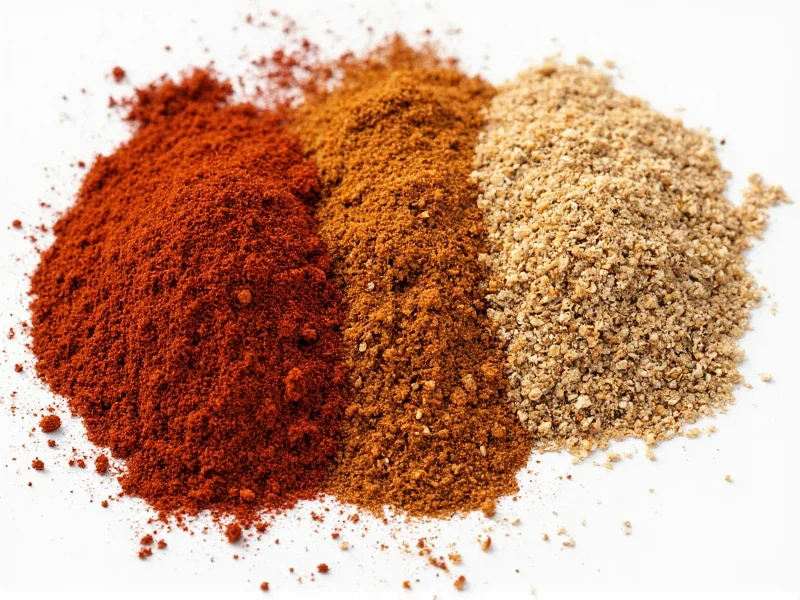Understanding the precise spice level of pasilla peppers helps home cooks and professional chefs alike create balanced dishes with authentic Mexican flavors. Unlike their fresh counterpart (the chilaca), pasilla peppers undergo a drying process that concentrates their earthy, raisin-like notes while maintaining a manageable heat profile.
What Exactly Is a Pasilla Pepper?
The term "pasilla" translates to "little raisin" in Spanish, perfectly describing both the pepper's wrinkled appearance and its sweet, fruity flavor profile. Botanically classified as Capsicum annuum, pasilla peppers are actually the dried form of chilaca peppers. Many people mistakenly confuse them with poblano peppers, but they're distinct varieties with different heat characteristics.
Decoding the Pasilla Pepper Spice Level
When evaluating pasilla pepper spice level, the Scoville scale provides the most reliable measurement. This scientific scale quantifies capsaicin concentration—the compound responsible for heat in chili peppers.
At 1,000-2,500 SHU, pasilla peppers sit comfortably in the mild category. To put this in perspective:
| Pepper Variety | Scoville Heat Units | Heat Comparison |
|---|---|---|
| Pasilla | 1,000-2,500 SHU | Mild to medium |
| Poblano (fresh) | 1,000-2,000 SHU | Similar mild heat |
| Jalapeño | 2,500-8,000 SHU | 2-3x hotter than pasilla |
| Serrano | 10,000-23,000 SHU | 5-10x hotter than pasilla |
| Habanero | 100,000-350,000 SHU | 50-150x hotter than pasilla |
This pasilla pepper Scoville scale positioning means they deliver noticeable warmth without overwhelming the palate—a crucial characteristic for traditional Mexican mole sauces where multiple chilies combine to create complex flavor layers.
Flavor Profile Beyond the Heat
While understanding how hot are pasilla peppers matters, their flavor complexity makes them indispensable in Mexican cuisine. They offer:
- Earthy, smoky base notes
- Pronounced raisin-like sweetness
- Subtle tobacco and berry undertones
- Rich umami depth when rehydrated
Unlike hotter varieties where capsaicin dominates, pasilla peppers allow their nuanced flavors to shine through. This makes them perfect for dishes where you want chili presence without intense burn—ideal for cooking with pasilla peppers in family-friendly recipes.
Culinary Applications of Pasilla Peppers
Chefs value pasilla peppers for their versatility in creating balanced heat. Common applications include:
Mole Sauces
As a foundational ingredient in many mole varieties, pasilla peppers provide the essential earthy backbone without excessive heat that would overpower chocolate and spice elements.
Adobo Sauces
When blended with vinegar, garlic, and spices, rehydrated pasilla peppers create complex adobo sauces perfect for marinating proteins or enhancing stews.
Salsas and Relishes
Finely chopped rehydrated pasillas add depth to cooked salsas without making them uncomfortably hot—a key consideration when preparing for diverse palates.
Pasilla Pepper Substitutes and Comparisons
When you can't find authentic pasilla peppers, understanding pasilla pepper vs poblano heat helps with substitutions:
- Ancho peppers (dried poblanos): Slightly sweeter with comparable 1,000-2,000 SHU heat level
- Guajillo peppers: Similar heat range (2,500-5,000 SHU) with brighter fruit notes
- Mulato peppers: Closest flavor match with slightly higher 2,500-3,000 SHU heat
For authentic results, combine ancho and mulato peppers to approximate pasilla's unique flavor-heat balance. Never substitute significantly hotter peppers like chipotles (2,500-10,000 SHU) unless you want to dramatically alter your dish's heat profile.
Selecting and Preparing Pasilla Peppers
When shopping for mild Mexican chili peppers, look for:
- Deep, purplish-brown color (avoid faded or yellowish specimens)
- Flexible texture (brittle peppers indicate age)
- Intact skin without mold or excessive cracking
Proper preparation maximizes flavor while managing heat:
- Remove stems and seeds (where most capsaicin concentrates)
- Toast lightly in dry skillet for 30-60 seconds to enhance flavors
- Soak in hot water for 15-20 minutes until pliable
- Blend with cooking liquid for smooth sauces
This process extracts maximum flavor while keeping the pasilla pepper spice level comfortably mild. Remember that removing seeds and membranes reduces heat by up to 70%, making even hotter pepper varieties more manageable.
Common Misconceptions About Pasilla Heat
Several myths persist about are pasilla peppers spicy:
- Misconception: Pasillas are the same as poblanos
Reality: Poblanos are fresh; pasillas are dried chilacas - Misconception: All dried chilies are extremely hot
Reality: Drying concentrates flavor but doesn't necessarily increase heat proportionally - Misconception: Darker chilies are always hotter
Reality: Color indicates ripeness and drying time, not heat level
Understanding these distinctions helps cooks accurately predict how pasilla pepper substitute heat level will affect their dishes.











 浙公网安备
33010002000092号
浙公网安备
33010002000092号 浙B2-20120091-4
浙B2-20120091-4